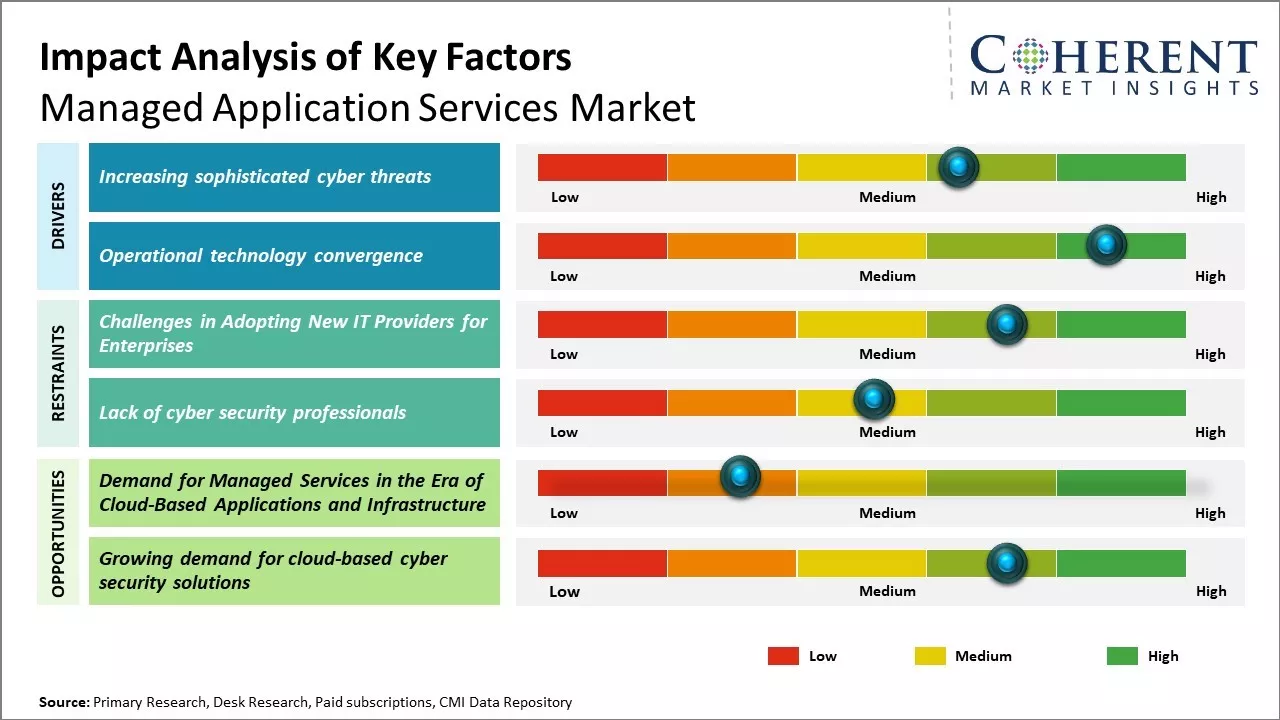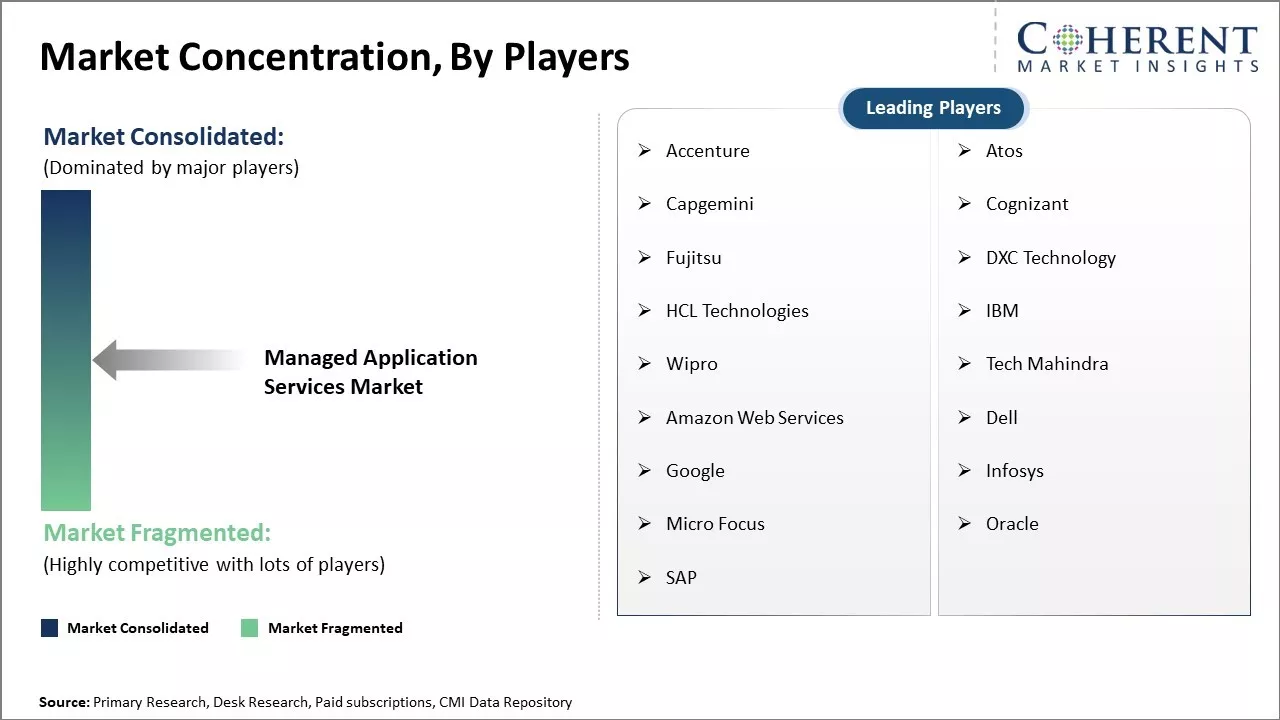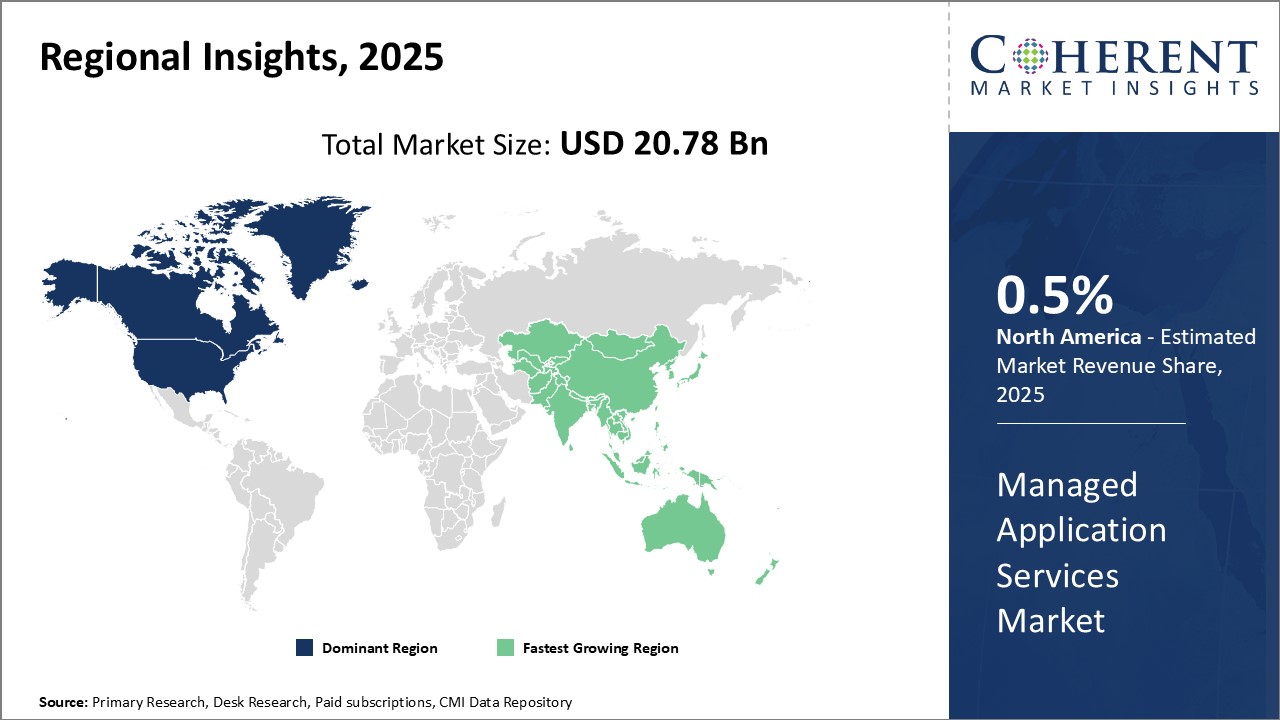The managed application services market is estimated to be valued at USD 20.78 Bn in 2025 and is expected to reach USD 72.77 Bn by 2032, growing at a compound annual growth rate (CAGR) of 19.6% from 2025 to 2032.

To learn more about this report, Download Free Sample
The global managed application services market is expected to grow steadily during the forecast period. Organizations are moving towards managed application services to concentrate on their core business expertise by outsourcing application management services. The growing demand for managing applications such as Customer Relationship Management (CRM), Enterprise Resource Planning (ERP), and industry-specific applications is forcing companies to drive greater operational efficiency and derive more value from their existing application systems.
Standardization, enhanced user experience, cost optimization, and regulatory compliance are some of the other factors that are expected to propel the demand for managed application services in the coming years. In 2024, Fujitsu introduced a hybrid IT management solution that integrates AI and blockchain to enhance security and compliance. This development reflects the industry's move towards adopting advanced technologies to improve application performance and meet regulatory requirements.
|
Current Events |
Description and its impact |
|
Integration of Artificial Intelligence (AI) and Automation
|
|
|
Emphasis on Application Modernization and Cloud-Native Services
|
|
Uncover macros and micros vetted on 75+ parameters: Get instant access to report
As more and more businesses operate in today's digital era, reliance on technology has increased tremendously. Applications drive all fundamental operations across organizations, ranging from customer-facing services to backend operations. Maintaining these applications running and in tip-top condition is hence critical for business continuity as well as user satisfaction. Yet, sustaining full-time in-house IT staff to manage applications has proved unsustainable to numerous firms.
Fast-evolving technology developments as well as business requirements mean that the skillsets required need perpetual refreshing. Hiring for all niche technology is also expensive. 2025 research by Gearset found that more than 80% of UK companies suffered software deployment delays with an average of 3.8 months and costing around £107,000 per year.
Outsourcing application management to a managed service provider allows businesses to stay agile in their technology use. They can leverage specialized expertise with large providers to support a diverse portfolio of applications. The on-demand model of managed application services means that extra resources can be procured easily as and when needed to handle spikes in workload or implement new systems.
With the accelerating digital transformation across industries, the risks of cyber-attacks and data breaches have unfortunately multiplied. Regular software updates, patching of vulnerabilities, and 24x7 monitoring are required to prevent sophisticated hacking attempts and ensure regulatory compliance. Yet, establishing strong security operations demands extensive security knowledge that is difficult for most enterprises to build and sustain in-house.
The increasing complexity of hybrid multi-clouds has further exacerbated these challenges. Utilizing managed application security services enables organizations to take advantage of the sophisticated tools, processes, and security expertise on hand with large managed service providers.
Providers adhere to gold-standard security best practices, policies, and governance for the whole application environment such as access controls, identity management, encryption, logging, and alerts. Twenty-four-seven security monitoring centres search for threats constantly. Consistent risk assessments and penetration testing enable identifying weaknesses ahead of time. Machine learning and analytics are employed to identify even hidden attacks in real time.

To learn more about this report, Download Free Sample
The continued transition to cloud-based applications and infrastructure create the demand for external management. Regulated industries in particular seek partners with deep experience in tasks like managing software updates. Application innovations in fields, such as AI and IoT, also generate new integration and support requirements. Global spending on cloud infrastructure services rose by 20% year-over-year in 2024, reaching $321.3 billion. This growth was driven by the expansion of AI models and the adoption of cloud-based applications.
Large enterprises dominate the managed application services market with 64.3% in 2025 due to the economies of scale they enjoy. With increasing size, organizations have more applications and IT infrastructure to manage. Managing this large IT portfolio internally is costly and needs huge teams of experienced professionals, which is very expensive for businesses. By outsourcing application management to specialized service providers, big businesses are able to cut down these management expenses to a large extent.
Service providers are experts at dealing with specific application domains and can therefore use their expertise with numerous clients. This makes them able to provide services more effectively on larger scales. It is also simpler for large companies to justify the contractually bound commitments and higher service costs that providers demand because of their high IT requirements. Small, and medium enterprises, with tight finances and the need to keep expenses low, generally do not have this bargaining muscle in negotiations.
The BFSI sector has remained the largest end user segment within the managed application services market with 37.4% in 2025. Core banking, insurance, asset management, and other financial functions rely heavily on customized applications for critical operations like transactions, risk management, and compliance. These applications often integrate diverse legacy systems, requiring deep technical expertise to operate and upgrade smoothly.
Outsourcing non-core application management to dedicated providers allows banks and insurers to focus internally on business strategy and innovation. Providers can maintain stringent service levels through expert staff and rigorous governance processes. They also gain understanding of financial regulations and security best practices while supporting applications for multiple BFSI clients. This focused domain competence is invaluable for an industry with high compliance requirements.
Additionally, agility needs are especially pronounced in BFSI due to changing market conditions and tight regulations. Services like application modernization help translate legacy systems into scalable architectures for digital transformation initiatives. New challenger banks, in particular, often find it more cost-effective to outsource completely rather than build costly in-house IT functions from the start.

To learn more about this report, Download Free Sample
North America is set to dominate the managed application service market with the largest share of 36% in 2025, due to its advanced technological infrastructure, mature enterprise ecosystem, and strong demand for cloud-native solutions. The region leads in AI-driven application monitoring and automation, with widespread adoption of AIOps and predictive analytics to optimize performance and reduce downtime. Cloud-based application management is another area of strength, as most enterprises operate in hybrid or multicloud environments that require sophisticated orchestration and support. Industry-specific leadership is evident in sectors like healthcare, finance, and retail, where compliance, scalability, and uptime are critical, especially in the BFSI sector, which accounts for a significant portion of global demand.
North American organizations also prioritize application security and regulatory compliance, driving innovation in blockchain integration and zero-trust architectures. Furthermore, the region has a high concentration of large enterprises, which represent the majority of global spending in managed application services. These companies seek cost efficiency, SLA adherence, and scalable support, reinforcing North America's position as the innovation and adoption leader in this market.
Asia Pacific is projected to expand the fastest growth of the market, with a 18% share in 2025, driven by a surge in digital transformation across developing economies. This growth is fueled by widespread cloud adoption, particularly among small and medium-sized enterprises in countries like India, China, and across Southeast Asia. Businesses are increasingly migrating to cloud-native applications to enhance scalability, reduce costs, and improve operational efficiency.
The region also shows strong momentum in integrating AI and automation into application management, enabling proactive monitoring and faster issue resolution. Manufacturing is the fastest-growing sector, while BFSI continues to be a dominant force in driving demand. Asia Pacific’s rise reflects a leapfrogging effect, where enterprises bypass legacy systems and embrace modern managed solutions, positioning the region as a future leader in innovation and service delivery.
The U.S. dominates the MAS market on account of its developed IT infrastructure, high cloud penetration, and robust presence of top-tier service providers such as IBM, Accenture, and Cognizant. The demand is fueled by digital transformation in industries and widespread uptake of AI, automation, and cybersecurity services.
India is a world centre for managed services providing cheaper and quality IT resources. Large IT companies like Infosys, TCS, and Wipro provide services to global customers, so India is a leading provider but not a major consumer. Its outsourcing potential keeps fueling MAS growth in the world.
| Report Coverage | Details | ||
|---|---|---|---|
| Base Year: | 2024 | Market Size in 2025: | USD 20.78 Bn |
| Historical Data for: | 2020 To 2024 | Forecast Period: | 2025 To 2032 |
| Forecast Period 2025 to 2032 CAGR: | 19.6% | 2032 Value Projection: | USD 72.77 Bn |
| Geographies covered: |
|
||
| Segments covered: |
|
||
| Companies covered: |
Accenture, Atos, Capgemini, Cognizant, Fujitsu, DXC Technology, HCL Technologies, IBM, Wipro, Tech Mahindra, Amazon Web Services, Dell, Google, Infosys, Micro Focus, Oracle, and SAP |
||
| Growth Drivers: |
|
||
| Restraints & Challenges: |
|
||
Uncover macros and micros vetted on 75+ parameters: Get instant access to report
*Definition: The managed application services market involves providing third-party management and support for various enterprise applications. This includes tasks like application management, monitoring and maintenance, software upgrades, security and compliance management for business-critical applications. Companies offer these services to help organizations improve the performance, availability, and security of their applications while reducing costs and freeing up internal IT resources.
Share
Share
About Author
Monica Shevgan has 9+ years of experience in market research and business consulting driving client-centric product delivery of the Information and Communication Technology (ICT) team, enhancing client experiences, and shaping business strategy for optimal outcomes. Passionate about client success.
Missing comfort of reading report in your local language? Find your preferred language :
Transform your Strategy with Exclusive Trending Reports :
Frequently Asked Questions
Joining thousands of companies around the world committed to making the Excellent Business Solutions.
View All Our Clients